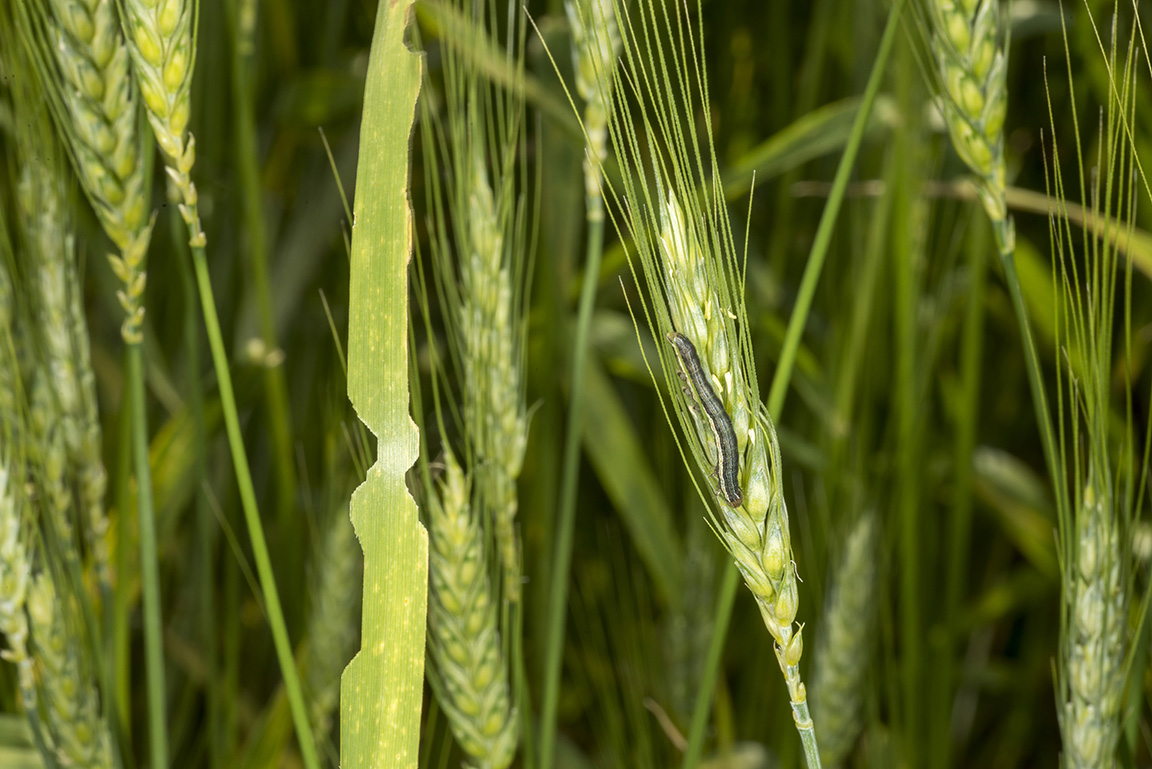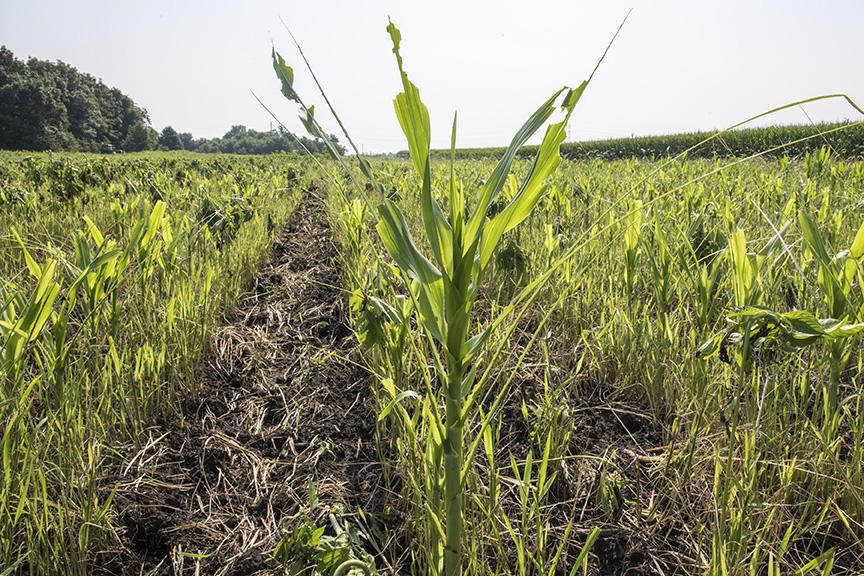Earlier this week, we received reports of armyworm in northern counties continuing to damage wheat. Unfortunately, by the time it was realized, many of the larvae were large and near the pupal stage. Treatment success, with larvae greater than 1.25” is variable. Producers spraying wheat in northeastern counties found this out recently, as last-ditch attempts were made to protect the flag leaves and heads from these ravenous, large caterpillars. The armyworm kept marching on.
How long will armyworm feed? The answer depends on how mature the larvae are in your area. A look back at the literature reveals that in 1914 Indiana experienced a significant armyworm outbreak. Dr. John J. Davis, known to us as the father of Purdue entomology, was inspired to conduct some simple yet valuable life development information on the armyworm that year. The chart below summarizes the approximate number of days for each of the life stages of the armyworm and body measurements:
| Stage | Approximate Days | Approximate Body Length (mm) | Approximate Head Capsule Width (mm) |
| Egg | 6 | – | – |
| Larva: | |||
| First instar | 4 | 2-4 | 0.4 |
| Second instar | 3.5 | 3-6 | 0.6 |
| Third instar | 3 | 5-10 | 1.0 |
| Fourth instar | 3 | 11-15 (about .5 inch) | 1.5 |
| Fifth instar | 3.5 | 14-21 | 2.4 |
| Sixth instar | 8 | 24-35 (about 1 to 1.5 inch) | 3.4 |
| Total larval stage | 25 | ||
| Pupa | 21 | – | – |
Although the information is over a century old, it’s just as applicable as ever. The question is: are the large armyworms almost finished feeding? When armyworms reach a length of about 1-1/2 inches they still have about 8 days to feed before pupating. During this time period they can consume a tremendous amount of foliage. If they consume their host, they can be seen “marching” from that field to another. Dr. Davis said, “The remarkable voracity of the armyworm during its last larval instar explains its sudden appearance in such enormous and destructive numbers when it is nearly full grown. The amount of foliage eaten in this (sixth) instar was nearly seven times as much as in the fifth instar, and more than 80 percent of all of the foliage eaten during the entire larval period.” In other words, this is when we are most likely to “see” them, as their damage becomes visible even from a distance.
When is it best to control armyworms? Obviously from the above, one needs to prevent the armyworm from getting over an inch in length. It has been stated by many of you who have been on the “front line” that the big worms are harder to kill than the small ones; the same message we hear for weed control. One might consider treating in the evening, closer to the time when the armyworm leaves their day-time hiding place and climb up plants to feed during the night.

Armyworm are difficult to control when large and they make lousy pets. (Photo Credit: John Obermeyer)
There are a range of products available, with a variety of pyrethroids being a cheap and common option. However, improved control can be achieved with products containing chlorantraniliprole, and this comes with a price premium. There is not one right answer on “which product to choose”. It all depends on how much a producer is willing to spend to attempt to salvage what’s left of the crop.
In any event, we are almost done with the larval armyworm story for spring of 2024. Will the armyworm be back later this summer? Moths, from these first-generation larvae, are already flying again (see “Armyworm Pheromone Trap Report,” and notice the uptick of moths in southern Indiana traps). Female moths, laden with eggs, are attracted to lush, dense grasses for deposition. This could be well managed forage grasses or something as small as a patch of ornamental grass in a yard. A handful of times over the years, we have been sent pictures of “back 40” cornfields, planted very late that were completely denuded in late June. A surprise to the neglectful producer! Because of the high moth numbers this spring, the possibility of uncharacteristic, late-season damage from armyworm exists this season. The good news is that armyworm larvae are very susceptible to fungal pathogens and can be wiped out by these plagues when they reach high densities. In short, Mother Nature will probably take care of this pest for the rest of the year. Happy Scouting!




